4 Principles Fred Rogers Leaves Us to Effectively Teach Swim Lessons to Children
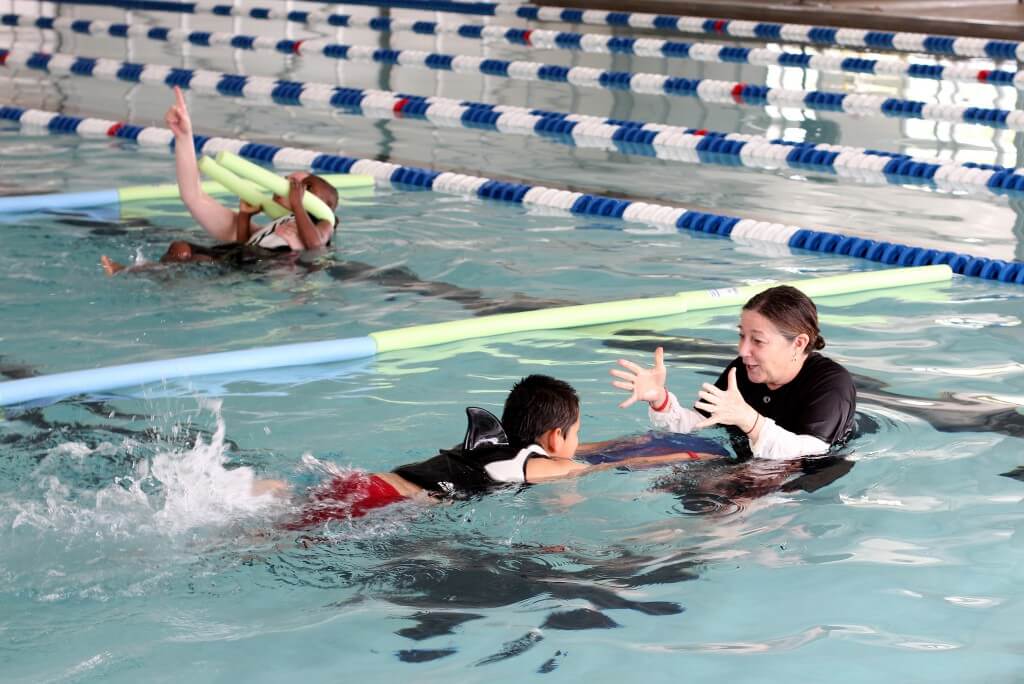
By Danny Whirlow, Swimming World College Intern.
On February 19, 1968, Fred McFeely Rogers entered the hearts of millions of American children with his television show, Mister Rogers’ Neighborhood. Taking his shoes off once inside, Mr. Rogers became a paragon for treating others with respect, kindness and compassion. With help from his friends – such as Mr. McFeely and Officer Clemmons – and a colorful cast of puppets, Mr. Rogers helped demystify the world for children.
Even after the show’s conclusion in 2001 and Mr. Rogers’ passing in 2003, his lessons continue to resonate with us today. Academic pedagogy has been formulated from his teachings, outfitting instructors with new ways to interact with students of all ages. However, the classroom isn’t the only place that we can utilize the lessons of Fred Rogers. Let’s take them to the pool.
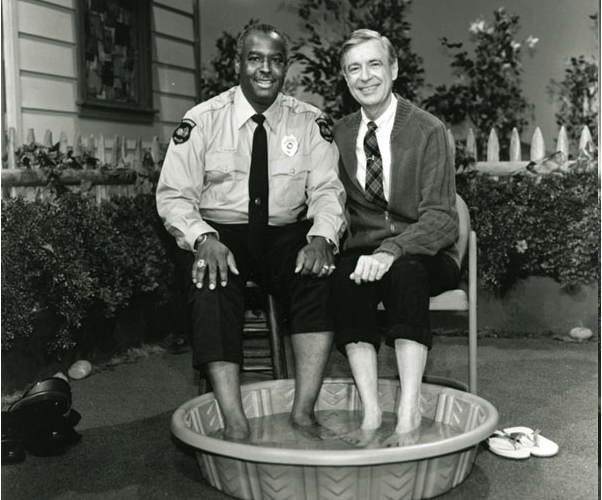
Photo Courtesy: Wikimedia Commons
Many of us began our swimming journeys in youth lessons. We fondly remember sitting on the the side of the pool with our little legs loosely hanging in the water. We were excited, afraid and clueless all at once. Some of us might even have been a little too confident in our abilities. It was our instructor – a parent, a collegiate athlete, an Olympian – who helped us take our first strokes, changing our lives one splash at a time.
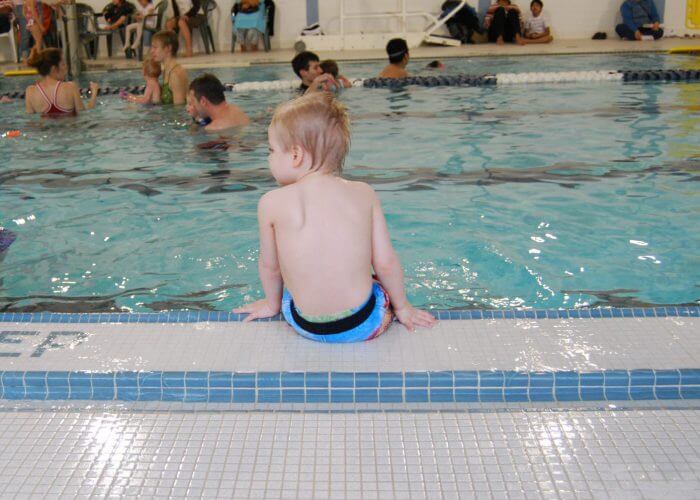
Photo Courtesy: James Deville
Along that journey, some us become those instructors, tasked with raising the next generation. However, it is often difficult to discern how to maximize our time with the children to give them the greatest experience possible. How is can we do this? The answer is simple: by drawing on the wisdom of The Good Neighbor himself.
Be Yourself
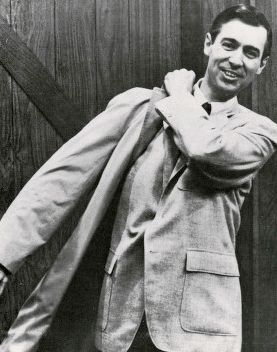
Photo Courtesy: Wikimedia Commons
In an interview with the Los Angles Times, Mr. Rogers expressed the importance of being one’s genuine self: “If you’re going to be working for children, you need to do your best not to lose your child-likeness. It’s wonderful to be able to just be yourself.” Children are deceptively perceptive and will see right through any phony business. This can severely damage the relationship between instructor and child, leading to a lack of respect for the instructor’s teachings, no matter how important. There’s no need to act or to play a character; Mr. Rogers didn’t do either of those and still had an incredibly successful career in television. Being our authentic selves is all we need.
Clear Communication
Mr. Rogers understood that children can take the words of adult quite literally. As detailed in his book, The Good Neighbor: The Life and Work of Fred Rogers, biographer Maxwell King writes of the great lengths Mr. Rogers went to in order to ensure that the children watching his show were not mislead or confused. His emphasis on clarity couldn’t be more obvious than in the lyrics of his song, “I Like to Be Told:”
I’d like to be told if it’s going to hurt
If it’s not going to hurt, I’d like to be told
I’d like to be told if you’re going away
When you’re coming back and how long you will stay,
I’d like to be told.
It helps me to get ready for all those things that are new.
I trust you more and more each time
That I’m finding those things to be true.
I’d like to be told because I’m trying to grow
And I’m trying to learn. . .
The unknown waters of the swimming pool can create apprehension within a child. To ease their fears, we can repeatedly remind each child that we will always be right next to them and that they will not drown in our care. In a practical sense, clear communication helps the children best understand each new movement and technique so that they can recreate them with ease.
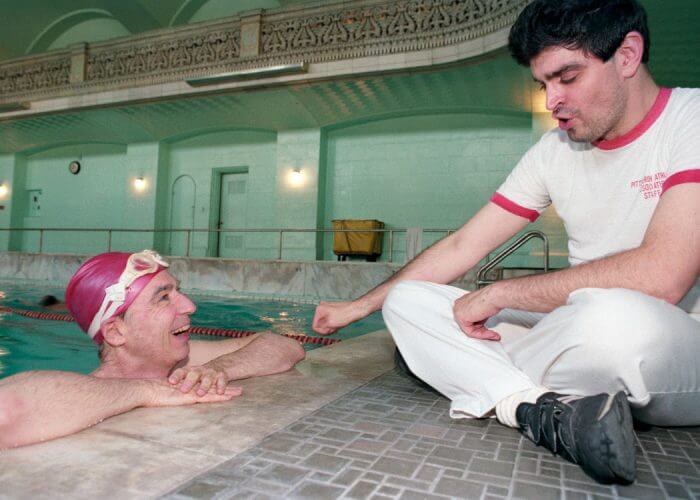
Photo Courtesy: Karen Struble Myers
Questioning and Listening
The swimming journey is not one without failure and stagnation. When a child encounters these feelings, they can become embarrassed and unwilling to share their thoughts with the instructor – perhaps out of fear of rebuke. In these moments, it is important to not stress about whether progress is being made. Instead, sympathizing with the child has the greatest effect.
In a newsletter from the Fred Rogers Center, Hedda Sharapan notes how keen of a listener Rogers was, describing him as very “others-oriented” and driven to connect with other people. He fostered these relationships by first asking questions. “Questions open the door for someone to share their thoughts and feelings with us,” Sharapen writes. After a person opened up to him, Rogers would listen intently with more than just his ears; his body language and eye contact showed the person that he was genuinely interested.
Gentle questioning and close listening show the child that we really do care about them, and this can further foster trust between instructor and child. Ask them how they’re feeling or what’s bothering them. Listen to what is giving them problems, and then find the solution.

Photo Courtesy: Buddhika Weerasinghe
Encouragement
As Mister Rogers’ Neighborhood aired its final episode after over 30 years on the air, Mr. Rogers took those final moments to congratulate his audience. “I’m proud of you, you know that. I hope you do,” he said warmly. It can be easy to lose track of all the things that go right during a swim lesson; however, we mustn’t let this keep us from celebrating even the smallest of victories. Let the children know when they nail a technique; rejoice with them when they swim a little bit farther than they did yesterday. Positive reinforcement can be the difference between a good swim lesson and a great swim lesson.
What lessons do you find particularly helpful when instructing young children? Which of Fred Rogers’ lessons is your favorite?
-All commentaries are the opinion of the author and do not necessarily reflect the views of Swimming World Magazine nor its staff.




Christian André Awah